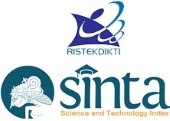Pengembangan Wisata Berkelanjutan dan Konservasi Ekosistem Darat di Taman Nasional Komodo
Abstract
Abstract
Sustainable tourism development plays a crucial role in biodiversity conservation areas that also function as tourist attractions, such as Komodo National Park. The use of these areas for tourism must continue to provide benefits to local communities while preserving ecological balance. However, increasing tourist numbers have begun to impact the ecosystem negatively. This study aims to examine tourism activities in Komodo National Park and assess how well sustainable tourism policies are implemented by stakeholders. It also offers recommendations for managing the park as both a conservation area and a sustainable tourism destination. Using an exploratory qualitative approach and the Miles and Huberman analysis technique, data were collected through interviews, field observations, and literature reviews. The study presents a development model for sustainable tourism in Komodo National Park, focusing on four key aspects of terrestrial ecosystem conservation: (1) protection of sensitive environments, (2) visitor management at natural sites, (3) interaction with wildlife, and (4) exploitation of species and animal welfare. The findings emphasize the need for integrated policy implementation and responsible tourism practices to maintain the park’s dual function as a conservation area and a source of local economic benefit.
Abstrak
Pembangunan pariwisata berkelanjutan menjadi elemen penting dalam kawasan konservasi keanekaragaman hayati yang juga berfungsi sebagai atraksi wisata, seperti Taman Nasional Komodo. Kawasan ini memiliki potensi sumber daya alam yang dapat memberikan manfaat ekonomi bagi masyarakat lokal. Namun, meningkatnya kunjungan wisatawan mulai menimbulkan gangguan terhadap keseimbangan ekosistem. Penelitian ini bertujuan untuk mengkaji aktivitas pariwisata di Taman Nasional Komodo, Labuan Bajo, serta menilai penerapan kebijakan wisata berkelanjutan oleh pengelola dan pelaku wisata. Selain itu, penelitian ini juga memberikan rekomendasi model pengelolaan atraksi wisata berkelanjutan yang ideal bagi kawasan tersebut. Metode yang digunakan adalah kualitatif eksploratif dengan teknik analisis Miles dan Huberman. Data dikumpulkan melalui wawancara, observasi langsung di lapangan, dan studi literatur. Hasil penelitian menghasilkan model pengembangan pengelolaan wisata berkelanjutan untuk Taman Nasional Komodo yang mempertimbangkan empat aspek utama konservasi ekosistem darat: (1) perlindungan terhadap lingkungan sensitif, (2) pengelolaan pengunjung di situs alam, (3) interaksi yang bertanggung jawab dengan satwa liar, dan (4) pengendalian eksploitasi spesies serta peningkatan kesejahteraan satwa.
Keywords
Full Text:
PDFReferences
Baggio, R. (2020). Tourism destinations: A universality conjecture based on network science. Annals of Tourism Research, 82, 102929.
Burford, G., Hoover, E., Velasco, I., Janoušková, S., Jimenez, A., Piggot, G., ... & Harder, M. K. (2013). Bringing the “missing pillar” into sustainable development goals: Towards intersubjective values-based indicators. Sustainability, 5(7), 3035-3059.
Catibog-Sinha, C. (2010). Biodiversity conservation and sustainable tourism: Philippine initiatives. Journal of Heritage Tourism, 5(4), 297-309.
DC, Y. P. P. W., Ayu, J. P., & Hamdani, A. R. T. (2024). Pariwisata dan SDG8 di Pasar Terapung Lok Baintan, Kabupaten Banjar, Kalimantan Selatan. Journal of Indonesian Tourism, Hospitality and Recreation, 7(1), 15-28.
Dudley, N. (2008). Guidelines for Applying Protected Area Management Categories. IUCN WCPA.
Font, X., English, R., Gkritzali, A., & Tian, W. (Stella). (2021). Value co-creation in sustainable tourism: A service-dominant logic approach. Tourism Management, 82.
Gössling, S., & Hall, C. M. (2019). Sharing versus collaborative economy: How to align ICT developments and the SDGs in tourism? Journal of Sustainable Tourism, 27(1), 74–96.
Lew, A. A., Joseph M., C., Michael, H., Patrick, B., & Salazar, N. B. (2020). Visions of travel and tourism after the global COVID-19 transformation of 2020. Tourism Geographies, 22(3), 455–466.
Maalim, M. M., & Furqan, A. (2019). Sustainable tourism development in protected area: Case of Cikole Forest reserve, West Bandung, Indonesia. ASEAN Journal on Hospitality and Tourism, 17(1), 38.
Marhanah, S., Sukriah, E., Juniardi, A., & Harto, B. (2023). Strategi pengembangan dan daya dukung berkelanjutan Kawasan Ekowisata The Lodge Maribaya. Journal of Indonesian Tourism, Hospitality and Recreation, 6(1), 75-84.
Mokodongan, T. (2024). Analysis of The Application of ecotourism principles in Indonesian natural tourism destinations : A literature review. Journal of Indonesian Tourism, Hospitality and Recreation, 7(2), 155–164.
Moscardo, G., Konovalov, E., Murphy, L., McGehee, N. G., & Schurmann, A. (2017). Linking tourism to social capital in destination communities. Journal of Destination Marketing & Management, 6(4), 286-295.
Rahmafitria, F., Dirgahayani, P., Putro, H. P. H., Rosyidie, A., & Hudalah, D. (2023). Tourism accessibility in protected islands: the case of the Komodo National Park, Indonesia. Tourism Review, 78(3), 966–985.
Setianingtias, R., Baiquni, M., & Kurniawan, A. (2019). Pemodelan indikator tujuan pembangunan berkelanjutan di Indonesia. Jurnal Ekonomi Pembangunan, 27(2), 61–74.
Wahyuti, E., Wibowo, T., Iriyono, S., Syari'fuAhdin, I., Kurniawan, M., Adnan, A., Indriasari, D., Buaihi, D., Priska, M.W. (2013). Kajian Peranan Taman Nasional Komodo dalam perekonomian Kabupaten Manggarai Barat Propinsi Nusa Tenggara Timur (Studi Kasus pengembangan Aspek Pemanfaatan Ekowisata). Labuan Bajo: Balai Taman Nasional Komodo.
Walpole, M. J dan Goodwin, H. J. 2001. “Local Attitudes towards Conservation and Tourism around Komodo National Park, Indonesia”. Environmental Conservation, 28(2), 160–166.
Wismaningtyas, T. A., Sinuraya, S. I., Nugraha, J. T., Mahendradi, R. M., Orbawati, E. B., & Hendrarto, H. Desa (2024). Borobudur sebagai pendukung kawasan destinasi pariwisata super prioritas candi Borobudur: sebuah analisis komponen wisata. Journal of Indonesian Tourism, Hospitality and Recreation, 7(1), 69-82.
DOI: https://doi.org/10.17509/jithor.v8i1.79010
Refbacks
- There are currently no refbacks.

This work is licensed under a Creative Commons Attribution-ShareAlike 4.0 International License.
eISSN : 2654-4687
pISSN : 2654-3893
This work is licensed under Creative Commons Attribution-ShareAlike 4.0 International License















